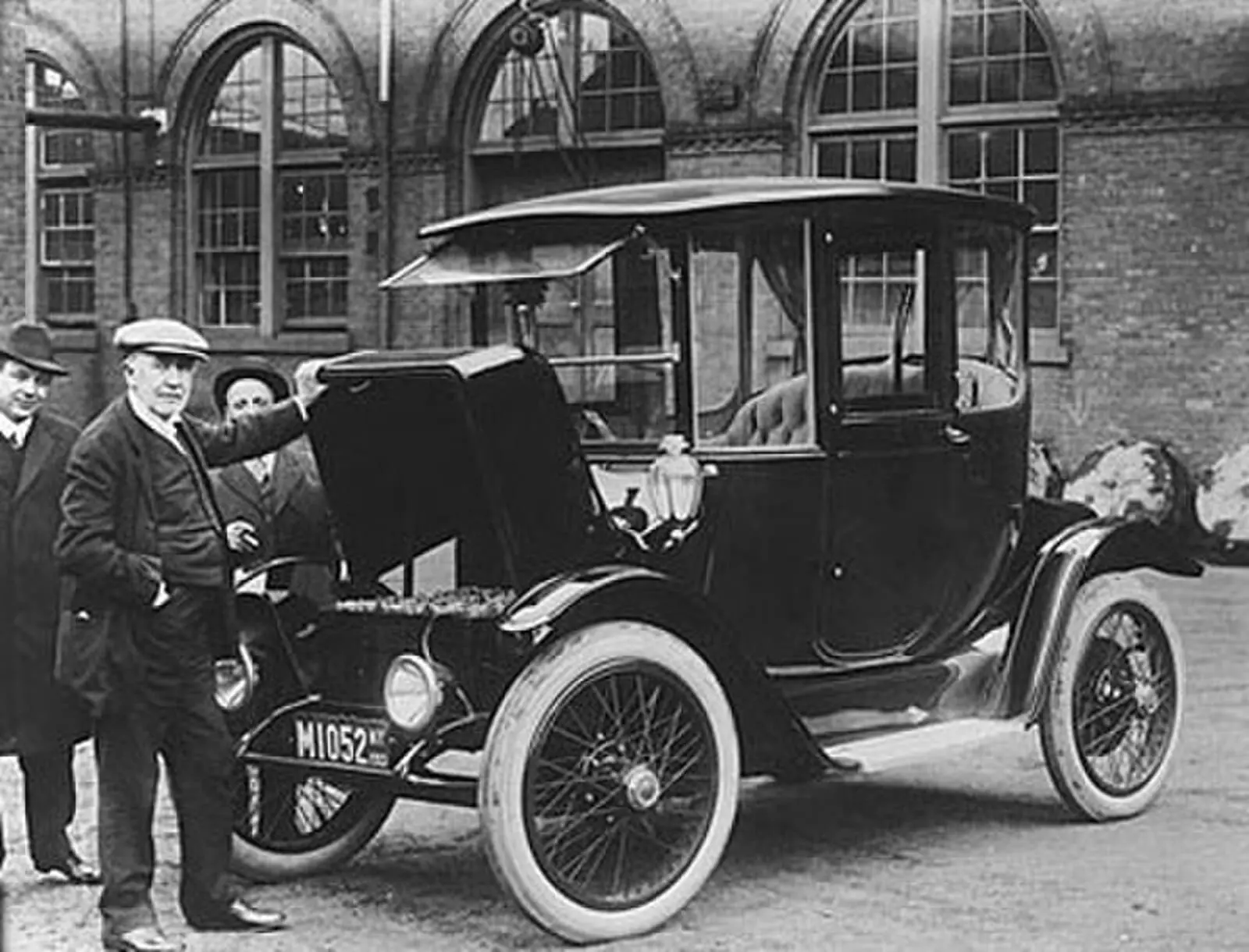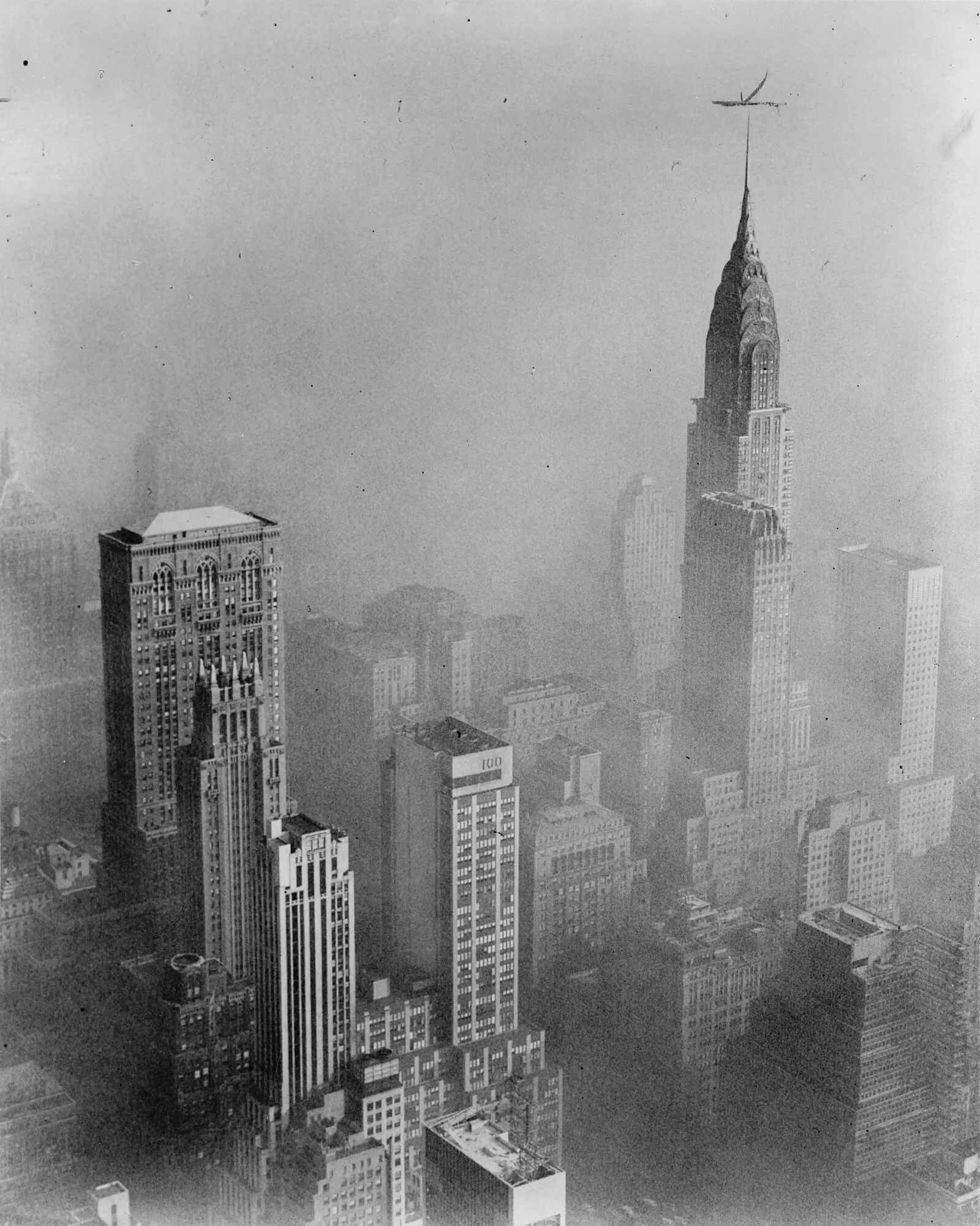This story was originally published by Grist and is reproduced here as part of the Climate Desk collaboration.
Nicholas Petris, born to Greek immigrants in the San Francisco Bay Area in 1923, could remember a time when electric trucks were a common sight on the streets of Oakland. In fact, just a couple decades before his birth, both electric and steam-powered vehicles—which were cleaner and more powerful, respectively, than early gas-powered cars—constituted far larger shares of the American car market than combustion vehicles. The electric cars of this era ran on lead-acid batteries, which had to be recharged or swapped out every 50 to 100 miles, while the steam cars relied on water boilers and hand cranks to run. But for a few historical contingencies, either model could have rendered its gas-powered alternatives obsolete.
By the time of Petris’ childhood, however, cars with internal combustion engines had become dominant. Gas guzzlers won out thanks to a combination of factors, including the discovery of vast oil reserves across the American West, improvements in the production and technology of gas-powered cars (including the invention of the electric starter, which eliminated the hand crank), the general population’s limited access to electricity, and the occasional propensity of early steam cars to explode.

Whereas electric car pioneers had envisioned communal networks of streetcars and taxis, the gas-powered automobile promised independence, unconstrained by the relatively limited distances battery-powered vehicles could travel without a charge. This meant more Americans than ever were driving on their own, rather than sharing mass transit, such as the railroads on which Petris’ father worked as a mechanic. Petris grew up in a California increasingly dense with traffic and crisscrossed by freeways.
But with the rise of combustion cars came smog. Named for its superficial resemblance to both smoke and fog, the lung-punishing, eye-burning, occasionally deadly mixture of air pollutants began settling on cities—most famously Los Angeles—in the mid-20th century. In 1949, for instance, a blanket of ammonia-smelling vapor settled on Petris’ hometown; a newspaper in nearby Palo Alto, where Petris was studying law at Stanford, declared smog “a growing menace.” By the early 1950s, scientists had identified its cause: exhaust from gas-powered cars. Legislators and regulators—especially in California, the biggest auto market in America—raced to limit the fumes that cars were permitted to spew into the atmosphere.
In 1958, a still-youthful Petris won election to the California Assembly and was immediately placed on its transportation committee. Just months later, the legislature ordered the state department of public health to establish air quality standards such as maximum allowable levels for auto pollutants. In 1966, the year Petris won election to the state Senate, a California agency required all new cars to reduce certain pollutants in exhaust. Yet federal clean air standards remained far weaker than California’s, and Detroit-based car companies expended tremendous resources aimed at slow-walking regulation. Industry representatives begged for delays, claiming they needed more time to improve pollution-control technology.
Over the seven years Petris spent in the legislature’s lower chamber before his election to the Senate, he had been fielding a steady drumbeat of constituent concerns about air pollution. Doctors showed up at his office begging him to do something about the brownish haze poisoning their patients. He read of the thousands who died from breathing polluted air in Los Angeles alone. A turning point came when a scientist brought Petris a report attributing his state’s infamous smog problem to the automobile and suggesting that, despite its protests, the auto industry had the tools available to reduce its emissions. Despite seven years of incremental legislative progress, Petris realized the government hadn’t done nearly enough. “Oh, we can’t wait any more,” he would recall remarking. It was time, Petris concluded, for something “extreme.”

On March 1, 1967, the newly elevated state senator announced his intention to introduce a bill that would limit each California family to just one gas-powered car beginning in 1975. “[The] internal combustion engine is pouring out poison,” Petris told the press. “So why not limit it?”
The press responded with scorn. Petris’ hometown newspaper, the Oakland Tribune, dismissed his proposal as “so ridiculous that it is difficult to select from the variety of arguments that demonstrate its absurdity.” Even the senator’s campaign manager was furious. Yet rather than watering down his bill, Petris altered it to simply ban all cars with internal combustion engines by 1975.
California’s other legislators were uninterested, so Petris asked merely that his Senate colleagues study the subject further during the legislative recess, during which time he could regroup. Few of these colleagues could have suspected that Petris’ crusade was just beginning. In fact, in the years to come, the California legislature would come shockingly close to heeding his call and banning all gas-powered cars. Copycat efforts would erupt across the country and within the US Congress. For a brief moment, Petris’ pipe dream would be at the vanguard of the burgeoning environmental movement.
“We want to scare hell out of the industry,” said a New York state legislator. “We want them to come up with a clean alternative, now.”
As we now well know, this fight to ban the internal combustion engine ultimately failed, stymied by aggressive auto industry lobbying. But more than 50 years later, history appears to be repeating itself. Late in the summer of 2022, a California state agency announced a ban on the sale of new cars containing internal combustion engines. This ban, set to take full effect in 2035, ignited explosive reactions across the political spectrum. In a matter of months, almost a dozen other states had followed suit, enacting bans modeled after California’s, and the European Union appeared poised to do the same.
As it had a half-century earlier, fierce pushback came from the auto industry and its political allies. In Europe, the government of Germany (home to several powerful automakers) forced a wide loophole into the ban, and other countries (including Italy, home to other big car companies) are now pushing to delay implementation. In the United States, the House of Representatives passed a bill to strip all states of their ability to impose such bans. Though the Senate has not done likewise, the Supreme Court may well be preparing to eliminate California’s authority to set tougher auto emissions standards than the federal government, a position that former President Donald Trump would undoubtedly support if he wins another presidential term in November.









